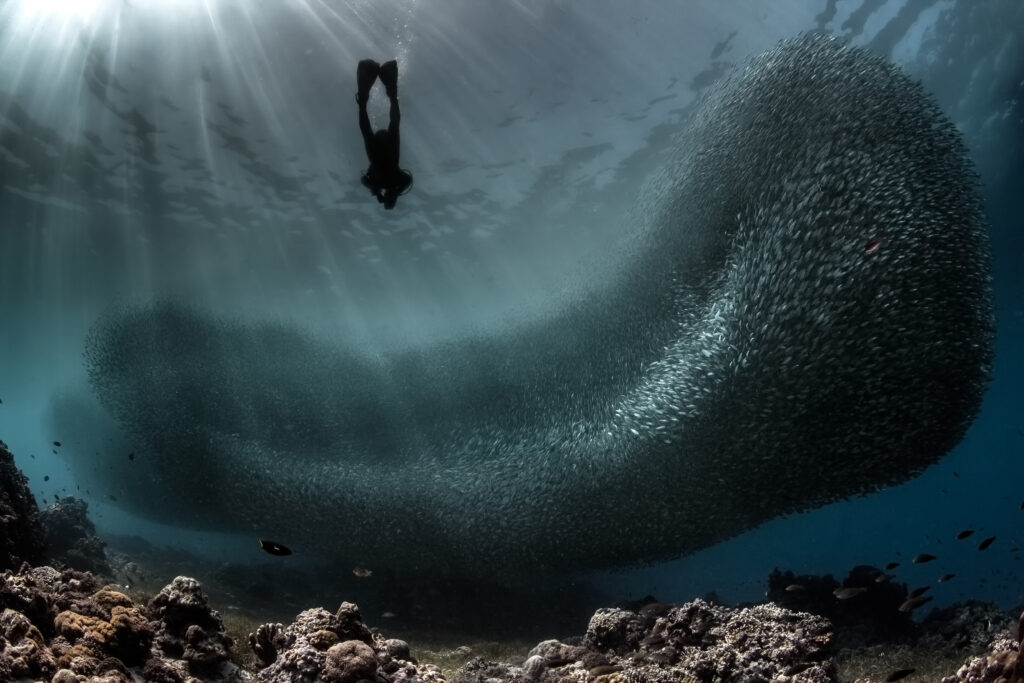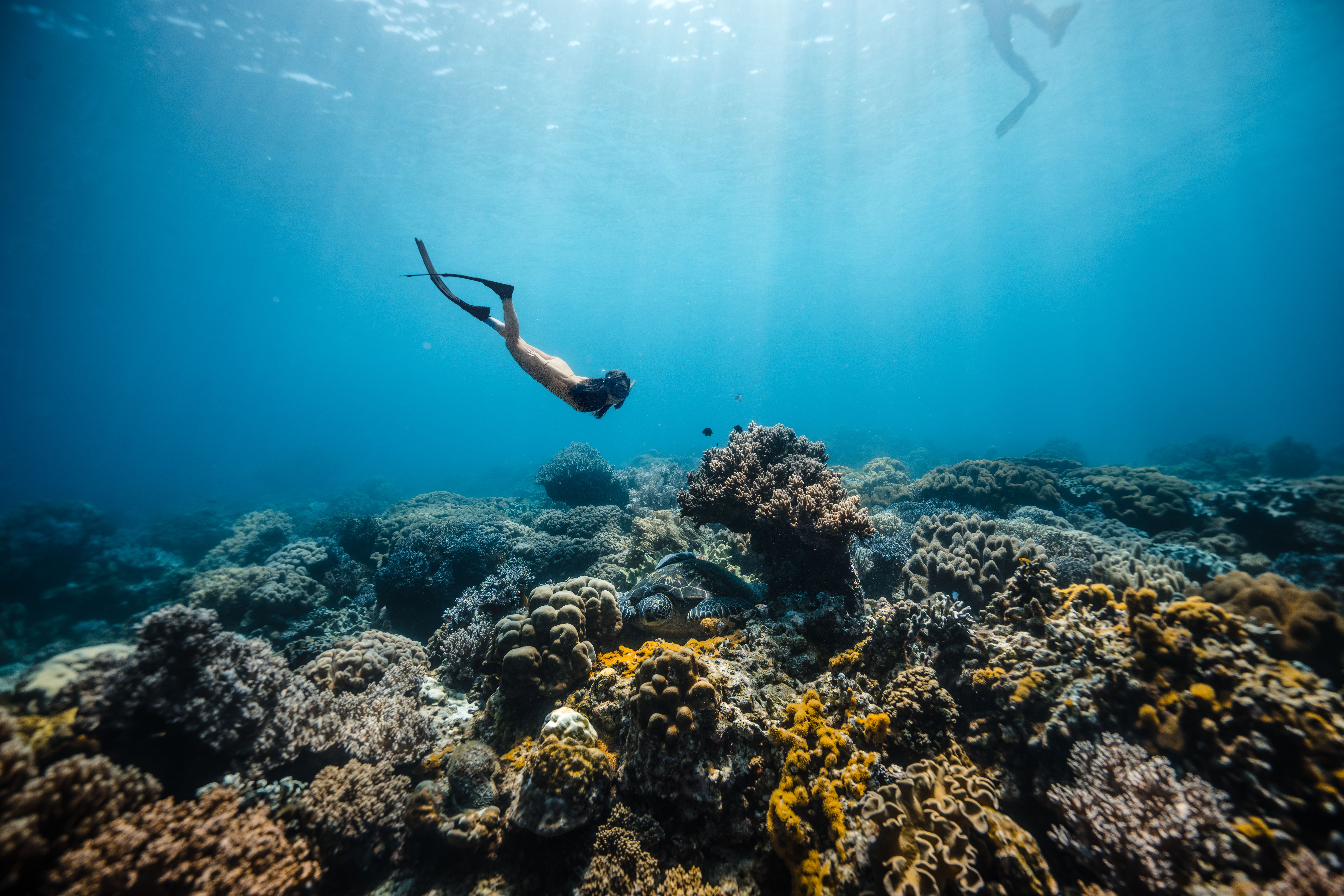FreeDiving is a sport that involves diving deep into the ocean on a single breath of air. It is an exhilarating and challenging activity that allows individuals to explore the underwater world in a unique and intimate way. Unlike scuba diving, which provides the diver with a breathing apparatus, FreeDiving requires one to rely solely on the air held in their lungs, making the connection to the marine environment even more profound.
FreeDivers experience the ocean in its purest form, moving fluidly without the noise and restrictions of equipment. This minimalist approach to diving opens up a world of tranquility where the only sound is the heartbeat of the diver, allowing for a meditative experience that is hard to find on land. It’s a sport that pushes the boundaries of human potential and offers an unparalleled way to engage with the sea.
Understanding FreeDiving

The Basics of FreeDiving
FreeDiving is a type of breath-hold diving that allows individuals to descend to great depths underwater without the use of any breathing equipment. This sport requires a combination of mental and physical strength, along with proper training and technique. Divers must learn to control their breath, conserve oxygen, and manage the psychological challenges of being deep underwater without external support.
The goal of free diving is to reach as deep as possible on a single breath of air and return to the surface safely. The current world record for the deepest free dive is an astonishing 214 meters, achieved by Herbert Nitsch in 2007. However, most recreational free divers typically dive to depths between 10 to 40 meters. These dives, while not record-breaking, still offer the thrill of the sport and allow divers to witness the wonders of the ocean firsthand.
The History of FreeDiving
FreeDiving is not a new sport and has been practiced for thousands of years by various cultures as a means of hunting and gathering food from the ocean. It has also been used for pearl diving, sponge diving, and even to recover items lost at sea. Ancient civilizations relied on FreeDiving for sustenance and commerce, shaping their way of life around the skills required to dive effectively.
In modern times, FreeDiving has evolved into a competitive sport with various disciplines such as depth diving, dynamic apnea (horizontal distance underwater), and static apnea (holding one’s breath for as long as possible on the surface). It has also gained popularity as a recreational activity, with more and more people drawn to the sport for its physical and mental challenges, as well as the serenity it offers.
The Benefits of FreeDiving
Aside from the thrill and challenge, FreeDiving offers a range of physical and mental benefits. It is an excellent form of low-impact exercise that improves lung capacity, cardiovascular health, and overall fitness. It also requires a high level of mental focus, which can help reduce stress and increase mindfulness. As divers work to hold their breath for extended periods, they develop greater control over their bodies and minds, leading to increased discipline and concentration in everyday life.
Furthermore, FreeDiving allows individuals to explore and connect with the underwater world in a way that no other sport can. It provides a sense of freedom and tranquility, with the ability to witness marine life up close and personal. FreeDivers often describe their experiences as life-changing, as they develop a profound connection to the ocean and a deeper understanding of their own capabilities.
The Different Types of FreeDiving

Depth Diving
Depth diving is the most well-known and visually impressive discipline of FreeDiving. It involves diving vertically into the ocean, using a weighted sled or rope to descend and return to the surface. This type of free diving requires proper training and technique to equalize pressure in the ears and lungs, as well as to manage the effects of pressure on the body. Depth divers must be adept at relaxation and buoyancy control to safely navigate the depths.
Depth diving not only tests the diver’s ability to withstand the pressure of the deep sea but also their capacity to remain calm and composed in an environment where humans are not naturally designed to thrive. It’s a true testament to the human spirit and the desire to explore beyond our usual boundaries.
Dynamic Apnea
Dynamic Apnea is a discipline of FreeDiving that involves swimming horizontally underwater for a set distance without surfacing for air. This type of free diving requires excellent technique, body control, and efficient use of oxygen to achieve longer distances. Divers must streamline their movements to minimize drag and optimize their energy expenditure throughout the swim.
Dynamic Apnea is often compared to underwater sprinting, where the goal is to cover as much distance as possible before the need to breathe becomes too great. This discipline emphasizes the importance of a strong swimming technique and the ability to remain relaxed under the pressure of limited oxygen.

Static Apnea
Static Apnea is a discipline of FreeDiving that involves holding one’s breath for as long as possible on the surface of the water. This type of free diving requires a high level of mental focus and relaxation to conserve oxygen and extend breath-holding time. It’s a challenge of endurance and the diver’s ability to maintain composure while fighting the body’s natural urge to breathe.
Static Apnea is often practiced as a form of meditation and self-discovery. It allows divers to push the limits of their breath-holding capabilities and to explore the power of their minds over their physiological responses. It is also a useful training tool for other FreeDiving disciplines, as it helps divers increase their breath-holding capacity and mental resilience.
Essential Equipment for FreeDiving
Unlike scuba diving, FreeDiving does not require a lot of equipment. However, there are a few essential items that every free diver should have:
Wetsuit
A wetsuit is essential for FreeDiving as it not only keeps the body warm but also provides buoyancy and protection from the elements. Wetsuits for FreeDiving are typically made of neoprene and come in different thicknesses depending on the water temperature. They also often have a smooth exterior to reduce drag and allow for more efficient movement through the water.
Choosing the right wetsuit is crucial for comfort and performance during a dive. A well-fitted wetsuit will ensure that the diver retains body heat in cooler waters and maintains the flexibility needed to move freely. It also helps to prevent scrapes and stings from marine life or rough surfaces.
Mask
A mask is necessary for FreeDiving to protect the eyes and allow for clear vision underwater. A low volume mask is preferred as it requires less air to equalize and provides a wider field of view. The mask should fit snugly without being too tight and should have a strong seal to prevent water from entering.
The design of FreeDiving masks is often streamlined to reduce resistance and help divers move effortlessly through the water. Some masks also feature tinted lenses to reduce glare and improve visibility in bright conditions.
Fins
Fins are essential for efficient and powerful swimming during FreeDiving. They come in various styles and materials, and it is important to choose a pair that is comfortable and fits well. Long fins are commonly used in FreeDiving because they provide a greater propulsion with less effort, allowing divers to conserve energy and oxygen.
Fins used for FreeDiving are usually made of fiberglass, carbon fiber, or plastic, each offering different levels of flexibility and responsiveness. A diver’s choice of fins can greatly affect their performance, and many divers will have multiple pairs for different conditions and types of dives.
Weight Belt
A weight belt is necessary for FreeDiving to help individuals achieve neutral buoyancy and descend to greater depths. The amount of weight needed will depend on the individual’s body composition and the type of wetsuit being worn. The weights should be distributed evenly to maintain proper balance and posture during the dive.
Weight belts are typically made of rubber or nylon and have quick-release buckles for safety. In an emergency, a diver can quickly jettison the belt to ascend more rapidly to the surface.
Freediving Computer
A freediving computer is a useful tool for keeping track of depth, time, and vital signs during a dive. It can also provide valuable information for training and improving performance. These computers are designed to withstand the pressures of deep diving and are often equipped with alarms and timers to help divers manage their dives safely.
The use of a freediving computer can greatly enhance a diver’s experience by allowing them to focus on the dive itself rather than worrying about tracking their progress. It also helps in the planning and analysis of dives, making it an indispensable tool for both novice and experienced FreeDivers.
Safety Measures for FreeDiving
FreeDiving can be a dangerous sport if not done safely. It is essential to follow proper training and safety guidelines to ensure a safe and enjoyable experience. Here are a few safety measures to keep in mind:
Always Dive with a Buddy
One of the most important safety measures for FreeDiving is to never dive alone. Always have a buddy with you who can monitor your dive and be ready to assist if needed. A buddy system ensures that there is someone to help in case of an emergency and can make the difference between a safe dive and a tragic accident.
Never Push Your Limits
It is crucial to listen to your body and never push yourself beyond your limits. Always dive within your comfort zone and never dive deeper or longer than what you have trained for. Overestimating one’s abilities can lead to dangerous situations such as shallow water blackout or loss of motor control.
Never Dive While Under the Influence
Alcohol and drugs impair judgment and can increase the risk of accidents while FreeDiving. Never dive while under the influence of these substances. Diving requires clear-headedness and precise control over one’s actions, both of which are compromised when substances are involved.
Take Proper Training
Proper training is essential for FreeDiving, especially for depth diving. It is important to learn proper equalization techniques, safety procedures, and how to manage the effects of pressure on the body. Certified courses are available and are highly recommended for anyone interested in taking up the sport.
Use Proper Equipment
Using the right equipment is crucial for a safe and enjoyable FreeDiving experience. Always make sure your equipment is in good condition and properly maintained. Regular checks and servicing will ensure that your gear performs as expected and will not fail during a dive.
FreeDiving Around the World
FreeDiving is a global sport that can be enjoyed in many locations around the world. Some popular destinations include:
The Blue Hole, Belize
The Blue Hole in Belize is a popular dive site for experienced FreeDivers. It is a deep, natural sinkhole that offers clear waters and an abundance of marine life. The site is renowned for its stunning coral formations and provides an otherworldly experience for those who venture into its depths.
Dean’s Blue Hole, Bahamas
Dean’s Blue Hole in the Bahamas is the deepest known blue hole in the world, making it a popular spot for depth diving. It offers crystal clear waters and a unique diving experience. The vertical cave surrounded by coral reefs is a mesmerizing sight and attracts FreeDivers from all over the globe.
Koh Tao, Thailand
Koh Tao in Thailand is known for its beautiful beaches and diverse marine life, making it an ideal location for FreeDiving. It also offers a range of training courses for all levels of FreeDivers. The warm, tropical waters and vibrant underwater ecosystems make Koh Tao a paradise for underwater explorers.
Conclusion
FreeDiving is a thrilling and challenging sport that allows individuals to explore the underwater world in a unique way. It offers a range


